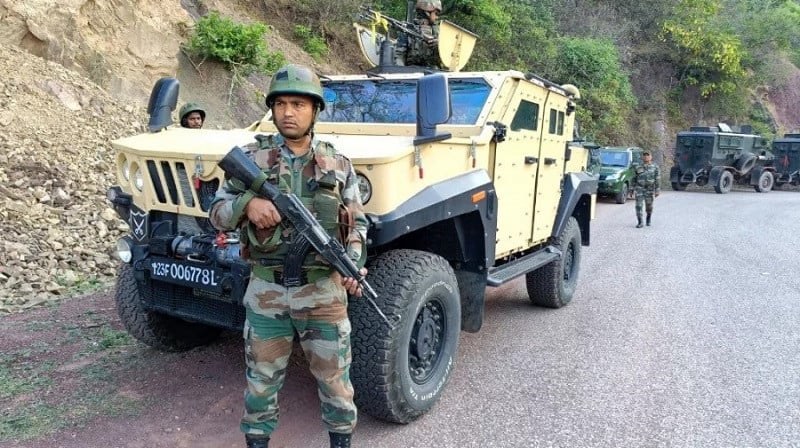On Saturday, two Indian soldiers were killed by freedom fighters and two others injured in Indian Illegally Occupied Jammu and Kashmir (IIOJK), days before local elections in the disputed Himalayan region.
While the region has faced instability since the 1990s, experts claim that the recent wave of conflict is more sophisticated than any seen in decades. Indian military and intelligence services are now grappling with how to contain it.
Kashmir is set to hold its first regional elections in a decade this week, with Narendra Modi’s Bharatiya Janata Party (BJP) boasting of turning the region from a “terrorist hotspot into a tourist spot.” However, the increasing clashes suggest that the government’s claims of restoring peace may be overstated.
Since independence in 1947, both India and Pakistan have claimed Kashmir, resulting in three wars. In the 1990s, it was claimed that the region saw an insurgency supported by Pakistan, which drew in fighters from the Soviet-Afghan conflict, and India’s military crackdown came with accusations of human rights abuses.
Despite India’s efforts, the freedom fighters have endured. Kashmir remains one of the world’s most heavily militarised regions, and since 2019, Modi’s government has taken steps to tighten control. This includes revoking Kashmir’s partial autonomy, sending thousands of additional troops, imposing communication blackouts, and restricting movement across the region. While some in India’s establishment praised these moves, they were met with widespread anger in Kashmir and Pakistan.
According to India’s security forces, the insurgency has not been eliminated, and many experts believe that recent attacks are linked to the Modi government’s actions. After five soldiers were killed last November, India’s army chief, Gen Upendra Dwivedi, stated that these militants were highly trained, possibly in Pakistan or Afghanistan. He went on to allege that some were retired Pakistani soldiers.
Military and police officials describe this new breed of fighters as highly trained, equipped with drones, and using untraceable communication methods. They are able to wait for days before striking with precision and then disappearing into the mountainous terrain, making it difficult for Indian forces to track them.
Around 150 fighters are believed to be active in the region, and some have used body cameras to record their attacks, later uploading the footage online. In one instance, a video emerged showing the beheading of an Indian army officer in the Doda area.
Former Northern Command chief Deependra Singh Hooda remarked on the changing tactics of the Kashmiri fighters, noting how they ambush soldiers before vanishing, only to strike again elsewhere. Groups such as the People’s Anti-Fascist Front, the Resistance Front, and the Kashmir Tigers have claimed responsibility for these attacks.
There is also concern over the fighters expanding operations into Jammu province, a predominantly Hindu area that had largely been free from violence. Experts believe this is part of a strategy to exploit areas where Indian forces have been redeployed to the India-China border.
In response to rising fears, local militias in Jammu, such as the Village Defence Guards, are being re-armed by the government. Raj Kumar, 45, who recently volunteered to patrol his village, described the increasing militant activity. “The militants have sophisticated weapons and training – that is why we are asking for additional support from the government,” he said. “This time we are more afraid.”
